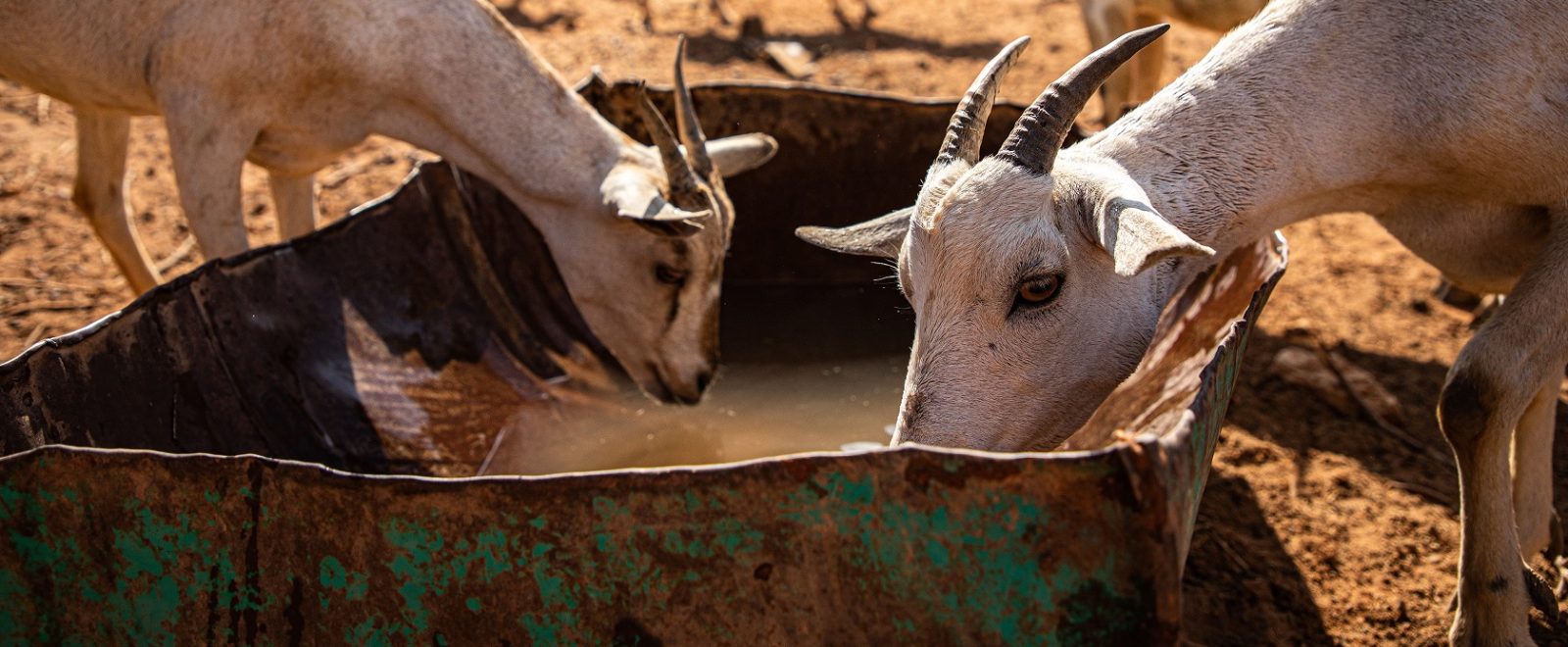The world is experiencing the third global food crisis in 15 years. The impact of Russia’s invasion on Ukraine is exacerbating the effects of climate change, conflicts, and the Covid-19 pandemic on the poorest communities. The recent skyrocketing of food and fuel prices is a further signal that the current food system is broken and must be completely reformed. The increased number of people suffering from hunger is an urgent call for change that must happen now with no further delay.
Even before the outbreak of Ukraine war, prices were driven up by the increased demand led by the post-covid recovery, Eastern African countries were already suffering from extreme drought, and the economic downturn led by the pandemic increased the number of people facing hunger. The outbreak of the war has reduced the capacity of Ukraine and Russia, the top producer of cereals, fuel, and fertilizers, to export, putting more countries, dependent on their exports, on the brink of a food crisis. 20 more countries or areas during June to September 2022 can worsen their food security situation, as warned by the World Food Programme (WFP) and Food and Agriculture Organization (FAO).
A useful background
In the last decades, the combination of World Trade Organization (WTO) trade rules and International Financial Institution (IFI) structural adjustment plans has forced many African countries to turn from food self-sufficiency to net-food importers. Land in developing countries has become extremely attractive for companies in search of extensive areas to convert to large-scale plantations requiring massive use of fertilizers and pesticides to produce at scale. Combined with high corporate concentration, the world now counts on just a few commodities whose primary use is to fuel cars or feed animals, produced by a few countries at low prices, controlled by a handful of traders, and subject to speculation on the financial market. Products like sugar and emissions-intensive commodities receive the most support worldwide, despite their potentially negative impact on health, their contribution to climate change and the resulting diversion of resources towards more diversified diets rich of fruits and vegetables.
This system is highly vulnerable to shocks hitting particularly the poorest who spend the majority of their income on food. The world’s poorest communities are spending double, triple and in some cases quadruple what they were paying before Russia’s invasion of Ukraine.
Who is suffering the most?
A recent survey of market traders and community members conducted by ActionAid in 13 countries across Africa, Asia, Latin America, and the Middle East, reports an average increase of 53% for bread prices, 63% for fuel prices, and 83% for fertilizers. If we look at specific communities the situation is even worse, with families in Lebanon spending as much as 275% more for wheat (pasta) products that they were at the end of February, and communities in Somaliland, already hit by prolonged drought, spending as much as 163% more for bread and 260% more for cooking oil.
Women, especially, are missing meals to feed their children and girls are dropping out of school. Many are unable to cultivate their crops and are selling their basic assets to earn a living, very often getting deeper into debt.
To address the crisis, the international community has already mobilized slightly more than $50 billion to support countries in need. On the political side, the UN Secretary General launched the Global Crisis Response Group, the G7 launched the Global Alliance for food security and the U.S. launched the roadmap for global food security call to action, with the intent to galvanize efforts against the crisis.
What do all these initiatives have in common?
All the global initiatives tend to address the crisis as a humanitarian emergency. They attribute the political responsibility to Russia and each one tries to mobilize like-minded countries around specific calls to action. They usually prioritize measures to keep trade open and production at the needed level, preserving the current system through some adjustments, like creating alternative routes to move grain from Ukraine to Europe, converting land under conservative programs to food production, or facilitating access to costly fertilizers.
But these are the wrong solutions. We must shift away from an unsustainable food system that relies on massive use of chemical inputs and an underpaid agricultural workforce. This type of system emits tons of greenhouse gas and does not promote healthy diets. We must shift towards a new way of producing and consuming food that cares for the people and the environment.
UN Agencies are aware of that. In a publication released last September addressing the issue of repurposing agricultural subsidies, the FAO/UNDP (United Nations Development Programme) and UN Environment Programme (UNEP) calculate $540 billion a year going to agricultural producers in the form of subsidies, with 70% being tied to a specific commodity, and fertilizers. The result is that one-third of cropland is currently used to feed livestock. From the report, the call to shift from high-meat diets in a plant-rich direction and transfer subsidies for animal feed and biofuel to crops directly consumed by people is truly clear.
It is also clear that we have reached the point in a increasingly warming climate where if we do not reform the food system, much of the land, where livestock grazes and crops are grown, will no longer be suitable for food production and many people will not survive the impacts of climate change.
What are the solutions?
This is an emergency. However, along with emergency measures, we must use this opportunity to invest in the long-term solution to address the root causes and avoid further crises in the future.
Support for Social protection schemes and public services to provide immediate assistance to those most in need. Countries’ fiscal capacity has been severely constrained by Covid-19, so the poorest countries, in particular, need safety nets to help their citizens who are facing the crisis. Conditions for debt repayment should be softened and grant-based support should be provided. Investment must go to public goods and services for agriculture while health and education must remain accessible.
Agricultural support must shift away from fossil fuel-based agriculture and support agroecology. Farmers highly dependent on external inputs must be immediately supported in their transition to agroecology by providing training, extension services, and infrastructure. Investment should go to scale-out agroecological practices such as compost and local manure, support local and regional food systems, small-scale farmers producing healthy food locally and territorial markets. Rural communities are suffering already from the impacts of climate change and need to build resilience through agroecological farming that is good for people and the environment.
Governments must invest in local food production through national and regional food reserves and diversified food systems. Food reserves act as buffers and reduce countries’ vulnerabilities to food shortages and price rises. Public procurement schemes such as school meals programs support local healthy food production, creating a market for agroecological farmers, with benefits for them and better nutrition for children. Those who produce most of the food do not benefit from the rise in food prices as all the profits go to traders and speculators. Farmers must regain control and get fair prices for their production. Governments must agree on regulating financial markets to avoid speculation on food commodities and rebuild national capacity to produce food to ensure people can access healthy diets through diversified food production.

